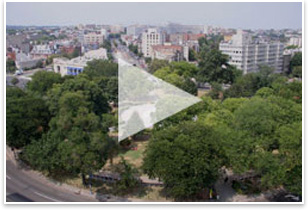National Building Museum Calling for All Neighborhoods Great and Green
Video competition asks architects how design makes a place “great”
Summary: The science and theory of energy-efficient green building as an ecological imperative are well established, but is it also possible that a sustainable neighborhood is an inherently successful, well-loved neighborhood? The National Building Museum (NBM), thinks there’s a connection here, and they’re asking architects across the nation to answer this question as well, with their “Great Green Places” video competition.

One of the videos featured on the National Building Museum Great Green Places page highlights D.C.’s Dupont Circle.
As part of their ongoing effort to document and spark discussion about vibrant, diverse, and sustainable neighborhoods, the NBM is asking architects to create and submit short videos of the neighborhoods that they live in (or have designed projects for), using their unique expertise to decode how factors like multi-modal transportation, mixed-uses, pedestrian scales, diverse building stock, and ample green recreational space can create successful and dynamic neighborhoods. For the benefit of lay people, it’s an opportunity to point out the importance of design in creating the places we all love to be and spend time in. For architects, it’s a chance to learn how colleagues are answering the call for better, more sustainable places in their own practice.
All sustainable places must meet five criteria. They must address:
Landscape: Places that are successful in uniting site planning and landscape design
Mixed Use: Places that demonstrate variety of retail, housing, and commercial uses
Sense of Place: Places that physically embrace their history and culture
Streetscape: Places that are pedestrian-friendly with activated public spaces
Transit Options: Places that encourage and support multiple forms of transportation, including subways, buses, and biking.
Examples of several “Great Green Places” in Washington, DC can be found here. Entrants should submit their videos to the Vimeo “Great Green Places” site. Submitted videos will have a chance to be selected for live screening as part of the museum’s participation in the DC Environmental Film Festival in March 2010. All the entries will be judged by audience response and museum staff. The top three film submissions will also be featured on the museum’s Web site for two weeks each in the spring of 2010. |


